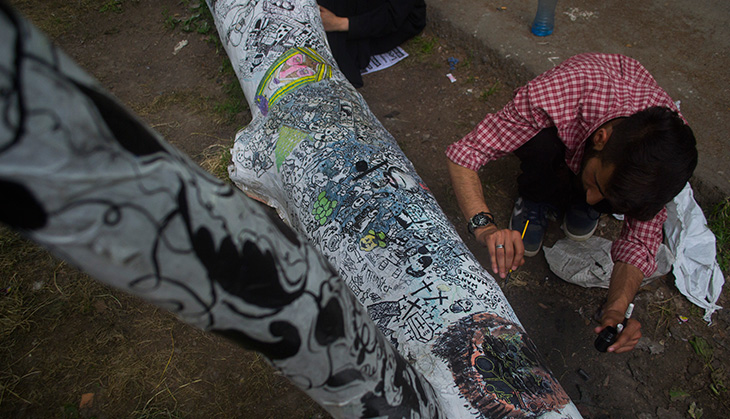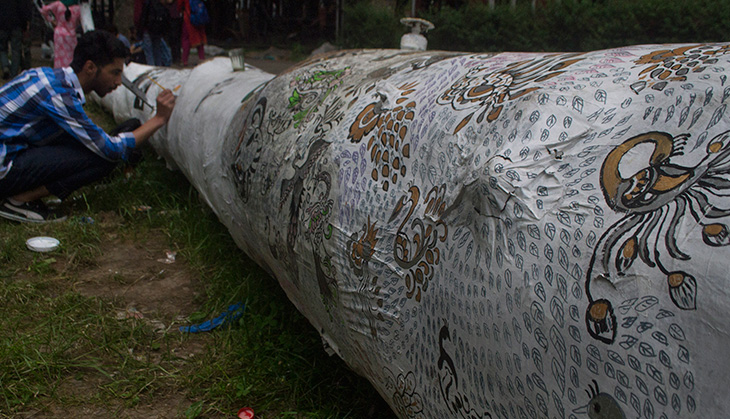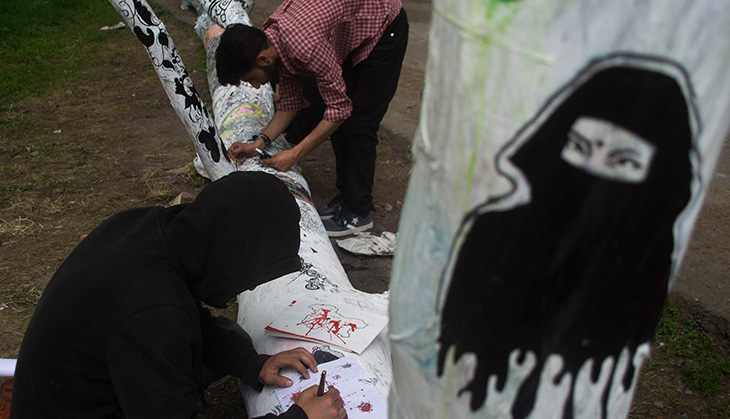Kashmir: bringing alive a dead Chinar with resistance art

As is perhaps bound to happen in a conflict zone, Kashmiris are forever seeking new ways of expressing their hopes, angst, and, most importantly, dissent. Through music, films, writing, social media, the young generation has helped extend the cultural reach of their movement, thus integrating it into the global discourse of resistance.
Now, a group of young artists has found a unique canvas for this purpose: a fallen Chinar tree at Kashmir University.
The campus includes a garden of Chinars, locally known as bouin, which is believed to have been planted by the Mughals and named Bagh-e-Naseem by Emperor Jehangir.
Recently, a dried up Chinar in the garden fell. Over 10 days, students of the university's Music and Fine Arts department transformed it into a 50-ft long piece of art. The tree has been turned into a frame for a collection of images depicting Kashmir's culture and the suffering of its people - of barbed wires, tortured souls, shattered houses, women smoking hookah and bidi.
Across eras and cultures, war and conflict have been the inspiration for some of the greatest art known to man. It is necessary, too, for preserving memory. That's what these young Kashmiris are trying to do.













![BJP's Kapil Mishra recreates Shankar Mahadevan’s ‘Breathless’ song to highlight Delhi pollution [WATCH] BJP's Kapil Mishra recreates Shankar Mahadevan’s ‘Breathless’ song to highlight Delhi pollution [WATCH]](https://images.catchnews.com/upload/2022/11/03/kapil-mishra_240884_300x172.png)

![Anupam Kher shares pictures of his toned body on 67th birthday [MUST SEE] Anupam Kher shares pictures of his toned body on 67th birthday [MUST SEE]](https://images.catchnews.com/upload/2022/03/07/Anupam_kher_231145_300x172.jpg)






